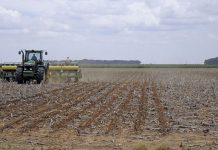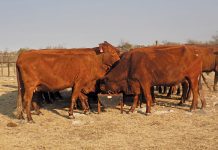While high international prices and rising input costs have seen grain prices tick steadily upwards over the past year, the recent searing heat and lack of rain are likely to lead to even higher prices and push up the price of maize meal and bread, according to the National Agricultural Marketing Council (NAMC).
The NAMC recently announced average food prices had increased 7,88% in the 12 months to December 2006, more than the Reserve Bank’s targeted inflation rate of 3% to 6%. There were price increases in nine of the 10 groups of food products it monitors, with seven of these rising by more than 8%.
Last week analysts canvassed by Business Report said inflation might stay higher for longer as food pressures mount, oil remains above $60/barrel and rand weakness continues, increasing the risk of another interest rate hike and putting pressure on food supplies. he average price for maize products increased 28,35% on the back of the coarse grain commodity price rising by 25%, with consumers having to fork out 36,16% more for a 5kg bag of super maize meal, a staple food for many poor South Africans. Other dramatic hikes were for 5kg special maize meal (20,52%), stewing beef (31,69%) and frozen chicken (27,21%).
The NAMC said the drought is set to erode the size of the maize harvest and affect wheat plantings in the country’s northern production regions, while it could negatively affect the availability of grazing. I t expected annual average white and yellow maize prices to be about R1 804/t and 738/t for the 2007/08 marketing season, with white maize futures trading as high as R2 000 during this time. It added that wheat producer prices could average R1 973/t this year, R500 more than in 2006. Beef prices were likely to continue dropping, as poor grazing conditions would result in an increased supply of weaners to auctions and feedlots, potentially weakening weaner and abattoir prices. “Provided full transmission of these trends and market power of retailers not being a factor, we expect that consumers could expect a relief in the very high retail prices of fresh meat,” the NAMC said.
A ccording to agricultural economics lecturer Michaela Cutts, who co-authored the report, it is difficult to say whether average food prices would continue to rise during the year, as the rising grain prices may be offset by lower meat prices. Cutts added that the drought and high maize prices would probably cause inflationary pressures once they’ve “worked their way through the system”. – Gregory Rule








